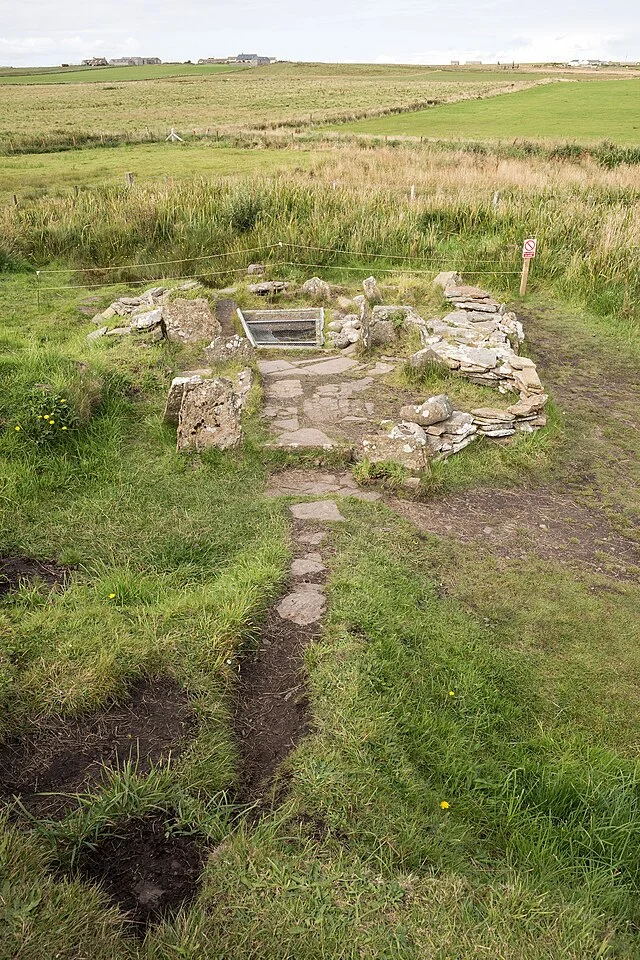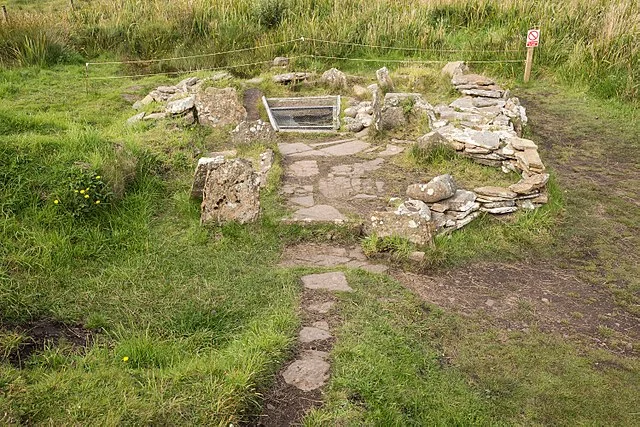The Liddle Burnt Mound is a Bronze Age archaeological site located on the island of South Ronaldsay, Orkney, Scotland. This well-preserved site provides valuable insights into domestic and industrial activities from around 2000–1000 BC. Its unique features and artifacts have made it an important focus for studying Bronze Age life in the region.
Get your dose of History via Email
Discovery and Excavation

The site was discovered in the 1930s during routine agricultural activities. Archaeologist John Stewart conducted the first systematic excavation in 1936. Later investigations, particularly in the 1970s, revealed detailed structures and clarified its purpose.
Structure and Features

The Liddle Burnt Mound consists of a crescent-shaped heap of burnt stones and a central stone-built trough. The trough, lined with clay, was likely used for heating water. Surrounding the trough, archaeologists found evidence of a hearth used to heat the stones. The site also features small structures nearby, possibly used for storage or shelter.
Function and Use

Burnt mounds like Liddle were common in the British Isles during the Bronze Age. The exact purpose of these sites remains debated. Most scholars agree they were used for boiling water. The heated water could have been used for cooking, bathing, dyeing, or tanning animal hides. At Liddle, the well-organized layout supports its function as a multi-purpose industrial site.
Environmental Context
South Ronaldsay’s environment played a role in the site’s preservation. Its remote location and low-intensity farming minimized disturbances. Additionally, the site’s proximity to freshwater ensured access to essential resources for daily activities.
Significance and Comparison
The Liddle Burnt Mound is one of the best-preserved burnt mound sites in Scotland. Similar mounds, like the Ballyvourney burnt mound in Ireland, show comparable construction techniques and usage patterns. Comparing these sites provides a broader understanding of shared practices across Bronze Age communities in the British Isles.
Conservation and Public Access
Today, the Liddle Burnt Mound is protected as a scheduled monument under Historic Environment Scotland. Visitors can access the site and learn about its history through informational displays. Ongoing conservation ensures the site’s long-term preservation.
Conclusion
The Liddle Burnt Mound is a significant archaeological site that illuminates the domestic and industrial activities of the Bronze Age. Its study enhances our understanding of how ancient communities utilized natural resources and organized their daily lives. Continued research and preservation efforts will ensure its place as a key resource for studying this period.
Source:

